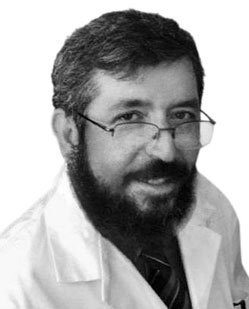Research
Telomeres & telomerases

Aging mechanisms are now seen as scientific progress. The latest discoveries, rewarded with a Nobel Prize, point to cells, their DNA, and more particularly telomere as being at the heart of the aging process.
The double helix structure of DNA, present in all living cells, contains all the information necessary for the development and proper functioning of the organism.
At the ends of these structures, like breakable caps, are the precious telomeres, strongly involved in the aging process when the latter shortens with age, pollution, stress, and a poor lifestyle. It is the telomerase enzyme that is responsible for cell renewal, up to the exhaustion of our youthfulness.


Three Nobel Prizes
In 1971, Russian biologist Alekseï Olovnikov put forward the theory that the maximum lifespan of cells is correlated with the gradual loss of telomeric sequences. With each cell division, the telomeres shorten and eventually reach a critical length that triggers cell aging; in other words the telomeres act as a biological clock that governs cell lifespan. This is known as the telomere theory of aging. Alekseï Olovnikov predicted the existence of telomerase, an enzyme capable of reversing this process by synthesizing new telomere DNA sequences. Elizabeth Blackburn, Carol Greider, and Jack Szostak officially identified telomerase in 1985 and received the Nobel Prize in Physiology or Medicine or their work in 2009.

Dr Georges VIEILLEDENT
Electrophonique ing.
EDS© Électrophotonic dataphoton system
An innovative technological solution relying on macroscopic imaging working on the corona effect in the UV spectrum.
Eletrophotonique Ingénierie has developed a system that can read the corona effect in the UV spectrum. This research and development work has been certified by the Ministry of Higher Education, French research and has been validated by academic experts working in the domain of biophotonics.

Dr Alain GERBI
Resercher INSERM
Scientific literature review
The antiaging properties of astragalus.
Astragalus fights the effects of aging, strengthens the body’s natural defenses, and has anti-oxidant properties (under current European regulations regarding health claims ID 3261, ID 3275/3968, and ID 3256).

Dr Christophe BENETTON
Researcher and Scientific Journalist
Telomeres explained
Restoring telomerase activity stops and reverses the aging process in telomerase-deficient mice.
The loss of genetic information due to the gradual deterioration of DNA over time has been clearly linked to the aging process. In particular, a decrease in the ability of telomeres to protect DNA leads to aging and cell death in animal models. So maintaining telomere integrity appears to be a priority goal in the struggle against aging.
Contact
1 877 545-1999 (Fr)
1 418 246-1999 (Fr)
1 833 236-1999 (En)